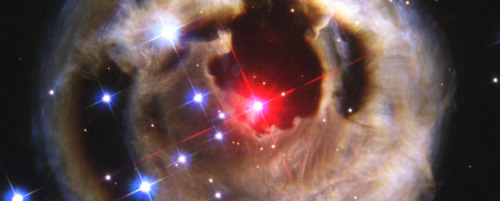Israeli scientists and international researchers have discovered a new type of exploding star or supernova that may shed light on some of the mysteries of the universe.

Exploding stars are either hot, young giants that go out in a violent display as they collapse under their own weight, or old, dense white dwarves that blow up in a thermonuclear explosion. Known as supernovae, until recently scientists had only observed two basic kinds of exploding stars. Now, scientists at Israel’s Weizmann Institute of Science, in collaboration with others around the world, have identified a third type of supernova.
The new supernova appeared in telescope images in early January 2005 and scientists, seeing that it had recently begun the process of exploding, started collecting and combining data from different telescope sites around the world, measuring both the amount of material thrown off in the explosion and its chemical makeup.
It soon became apparent to Dr. Avishay Gal-Yam, Hagai Perets, (now at the Harvard-Smithsonian Center for Astrophysics), Iair Arcavi and Michael Kiewe of the Weizmann Institute’s Faculty of Physics, together with researchers from Europe and North and South America, that the new supernova did not fit either of the known patterns. Their findings appear in a recent issue of Nate.”
“It was clear,” says the paper’s lead author Perets, “that we were seeing a new type of supernova.”
Computer simulation unlocks secrets
The amount of material hurled out from the supernova was too small for it to have come from an exploding giant. In addition, its location, distant from the busy hubs where new stars form, implied it was an older star that had had time to wander off from its birthplace. Also, its chemical makeup didn’t match that commonly seen in the second type of exploding star. The scientists turned to computer simulations to see which process could have produced such a result.
The common type of exploding white dwarf (a type Ia supernova) is mainly made up of carbon and oxygen, and the chemical composition of the ejected material reflects this. The newly discovered supernova had unusually high levels of the elements calcium and titanium; these are the products of a nuclear reaction involving helium, rather than carbon and oxygen.
We’ve never before seen a spectrum like this one,” says Paolo Mazzali (of the Max-Planck Institute for Astrophysics in Germany, and the Scuola Normale Superiore, Pisa, and INAF/Padova Observatory in Italy). “It was clear that the unique chemical composition of this explosion held an important key to understanding it.”
The researchers used computers to try to discern where the helium could be coming from. The simulations suggest that a pair of white dwarves is involved, with one of them stealing helium from the other. When the thief star’s helium load rises past a certain point, the explosion occurs. “The donor star is probably completely destroyed in the process, but we’re not quite sure about the fate of the thief star,” says Gal-Yam of the Weizmann Institute.
Helping to explain puzzling phenomenon
The scientists believe that several other previously observed supernovae may also fit this pattern. In fact, these relatively dim explosions might not be all that rare, and if so, their occurrence could explain some puzzling phenomena in the universe.
For example, almost all the elements heavier than hydrogen and helium have been created in, and dispersed by supernovae. The new type of supernova could help explain the prevalence of calcium in both the universe and in our bodies. It might also account for observed concentrations of particles called positrons in the center of our galaxy.
Positrons are identical to electrons, but with an opposite charge, and some have hypothesized that the decay of yet unseen “dark matter” particles may be responsible for their presence. But one of the products of the new supernova is a radioactive form of titanium that, as it decays, emits positrons. “Dark matter may or may not exist,” says Gal-Yam, “but these positrons are perhaps just as easily accounted for by the third type of supernova.”












